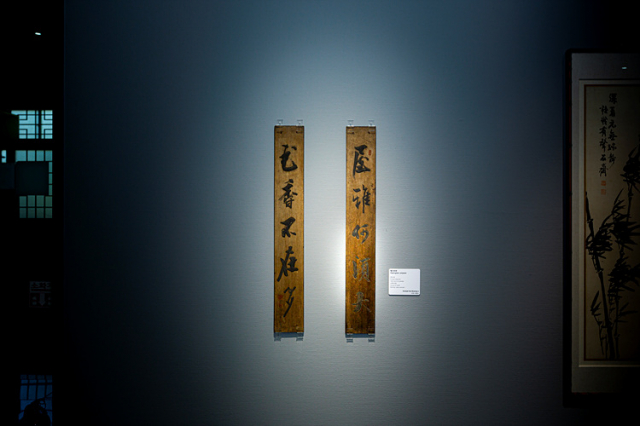
Haengseo Julyeon
Seokjae Seo Byeong-o
Seokjae Seo Byeong-o (1862-1936) was a master artist from Daegu who excelled in poetry, calligraphy, and painting—what we call the "three perfections" of a scholar-artist.
Seo Byeong-o personally knew late Joseon figures like Lee Ha-eung and Min Yeong-ik. From them, he learned traditional scholar painting and preserved these values during Korea's turbulent modern period.
Look at his orchid painting. Seo Byeong-o wasn't simply someone who painted orchids—he redefined what ink orchids could represent. His orchid paintings, called "Seokjae orchids," formed a distinctive style alongside Lee Ha-eung's and Min Yeong-ik's work.
Notice how the leaves flow freely yet maintain refined elegance. When modern art was becoming more realistic and decorative, Seo Byeong-o kept the traditional focus on expressing the artist's character through his subjects.
The rocks and bamboo painting has an inscription: "Painted by 74-year-old Seokjae." This late-period work shows how elderly masters often become freer in form while more concentrated in spirit. The bold brushwork reveals energy, while straight lines express firm will.
Bamboo traditionally symbolizes integrity and strength—a scholar's self-portrait. But Seo Byeong-o's bamboo goes beyond symbolism. He used ink and brush to paint "landscapes of the spirit.“
The paulownia tree work is also special. Paulownia was used to make traditional instruments and represented scholarly emotions. Using only ink tones, he beautifully captured the trunk's character.
His calligraphy shows fluid movement and stable composition, revealing deep cultivation and refined character. This demonstrates how writing and painting unite in traditional Korean art.
Seo Byeong-o represents the final flowering of traditional scholar painting. Even during rapid modernization, he preserved essential values, passing down Korea's artistic heritage to our time.
Seo Byeong-o personally knew late Joseon figures like Lee Ha-eung and Min Yeong-ik. From them, he learned traditional scholar painting and preserved these values during Korea's turbulent modern period.
Look at his orchid painting. Seo Byeong-o wasn't simply someone who painted orchids—he redefined what ink orchids could represent. His orchid paintings, called "Seokjae orchids," formed a distinctive style alongside Lee Ha-eung's and Min Yeong-ik's work.
Notice how the leaves flow freely yet maintain refined elegance. When modern art was becoming more realistic and decorative, Seo Byeong-o kept the traditional focus on expressing the artist's character through his subjects.
The rocks and bamboo painting has an inscription: "Painted by 74-year-old Seokjae." This late-period work shows how elderly masters often become freer in form while more concentrated in spirit. The bold brushwork reveals energy, while straight lines express firm will.
Bamboo traditionally symbolizes integrity and strength—a scholar's self-portrait. But Seo Byeong-o's bamboo goes beyond symbolism. He used ink and brush to paint "landscapes of the spirit.“
The paulownia tree work is also special. Paulownia was used to make traditional instruments and represented scholarly emotions. Using only ink tones, he beautifully captured the trunk's character.
His calligraphy shows fluid movement and stable composition, revealing deep cultivation and refined character. This demonstrates how writing and painting unite in traditional Korean art.
Seo Byeong-o represents the final flowering of traditional scholar painting. Even during rapid modernization, he preserved essential values, passing down Korea's artistic heritage to our time.
